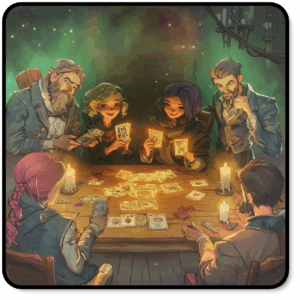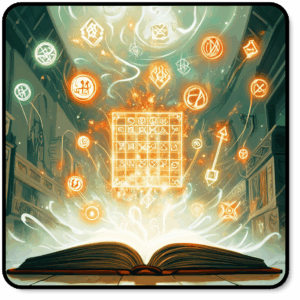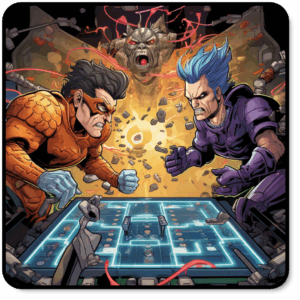

















HexChange
Mechanics
Mancala • Modular Board • Increased Value of Unchosen Resources
Game Overview
Core Concept:
HexChange is a 2–5 player economic strategy game where players collect and manipulate colored Hex Coins to fulfill contract cards. Using a variation of Mancala movement mechanic and a fluid pricing market, players aim to fulfill high-value contracts at the right moment while manipulating the market to maximize profits and undermine rivals. The game ends when the final contract is completed, and the player with the most money wins.
Key Systems:
- Hex Coin Collection Puzzle:
- Players move Hex Coins across the modular board following strict placement rules.
- Players also receive a bonus coin from the Reserve matching the color of the final space (optional).
- Dynamic Price Market:
- Each turn, players roll a die to adjust one Hex Coin color’s price up or down or choose an action for more price manipulation control.
- Contract Fulfillment (with Fee Mechanic):
- Players turn in specific sets of Hex Coins to fulfill contracts and earn money.
- Each contract also requires a fee, based on a single coin color’s market value.
- Fees can be paid in currency, matching Hex Coins, or a mix of both.
- Action Selection System:
- Players choose from six public actions each turn:
- Charity: Other players receive a Hex Coin.
- Redistribute: Rearrange coins from unguarded spaces.
- Relocate: Move your pawn to a new space.
- Renegotiate: Swap an active contract with the forecast contract.
- Replenish: Add new coins to the board.
- Reprice: Directly change three market prices by 1.
- Bonus and Dumping System:
- Players can “dump” all coins of one color to earn $1 per coin which is useful to avoid end-game penalties or manipulate the market.
Design Principles:
- Economic Timing: Players must react to market shifts while planning multi-turn fulfillment strategies.
- Shared Market, Private Strategy: Price tracks are public, but route building and collection choices remain uniquely personal.
- Board Variability: Modular layout ensures no two games play the same and difficulty scales naturally.
Endgame Structure:
- Trigger: The game ends when the final Contract Card is fulfilled.
- Victory Condition: Players total their money, then subtract penalties based on the market value of leftover Hex Coins.
- Tiebreakers (in order): Most contracts fulfilled → Pawn color with lowest market value → Leftmost pawn on Price Board
Future Expansion Ideas:
- Contract Types with Variable Fees: Introduce new contracts that scale with market conditions or opponent choices.
- Asymmetrical Roles: Assign player abilities tied to color or starting conditions.
- Market Events: Introduce timed or triggered events that impact pricing or contract flow.
